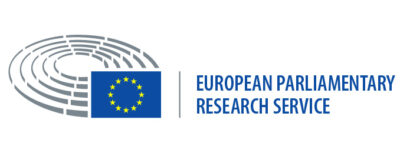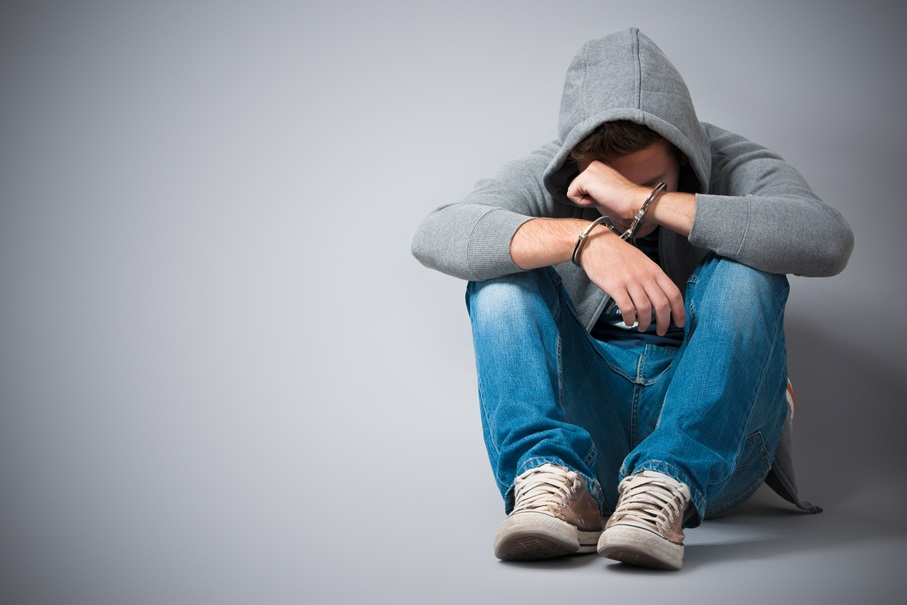Written by Anna Dimitrova-Stull, Ulla Jurviste and Irene Penas Dendariena,

Every year hundreds of thousands of children across the EU are involved in judicial proceedings. They may enter into contact with justice systems in many different ways: for family issues such as divorce or adoption, in administrative justice for immigration or nationality matters or in criminal justice, as victims, witnesses or suspects/offenders. It is essential that they are met with a system that respects both their particular vulnerability and their rights. To that purpose, a set of international standards has been developed to ensure that children are heard and protected in the process.
The EU Agency for Fundamental Rights (FRA) reveals that child participation practices in the EU vary not just across but also within Member States, and these practices are not always child-friendly. It points out that in recent years respect of the child’s right to be heard has improved particularly in criminal proceedings but in civil ones children are not always heard. There is a need to ensure that children’s access to justice and their treatment in legal proceedings is effectively monitored to prevent any discrimination, says FRA.
In January 2016, the European Parliament Committee on Civil Liberties, Justice and Home Affairs (LIBE) endorsed the agreement reached by the Parliament and the Council last December to set new rules designed to make legal protection of children who are suspected or accused of a crime more consistent within the EU, providing a set of rights that meet their specific needs. The agreement still needs to be approved by the plenary in March.
This Keysource brings together a selection of information materials describing the situation of children in judicial proceedings.
Overviews
Standing up for children? The Directive on procedural safeguards for children suspected or accused in criminal proceedings / Debbie Sayers, EU Law Analysis Blog, 22 December 2015.
This article analyses the proposed Directive in order to examine whether the aim to protect the rights of children in criminal proceedings is achieved.
Justice needs to be more child-friendly / FRA, press release, 5 May 2015.
Justice systems need to do more to cater to the needs of these children. Making justice more child-friendly is in the best interests of the child, improves child protection and children’s meaningful participation in judicial proceedings, says FRA.
Une justice adaptée aux enfants. Points de vue et expériences des professionnels / Journal du droit des jeunes 5/2015 (n° 345 – 346), pp. 26-34.
“Les enfants ne sont pas suffisamment soutenus lorsqu’ils participent à des procédures pénales ou civiles ; des environnements qui peuvent être intimidants pour des enfants ne sont pas toujours adaptés à leurs besoins.”
Just how child-friendly should justice be? / Killian O’Brien, Law Society Gazette, Jan/Feb 2013, pp. 14-15.
In this article, the author stresses the need for a well-informed, proactive approach to the involvement of children in the judicial process and argues that it is essential that children’s rights are promoted at an early stage.
Child-Friendly Justice: turning law into reality / Ankie Vandekerckhove & Killian O’Brien, ERA Forum, December 2013, Volume 14, Issue 4, 523-541 pp.
From the angle of the Council of Europe’s guidelines about justice for children, this article comments on what children can do whenever they get involved in legal proceedings where their rights and interests are at stake.
The role of the EU legal and policy framework in strengthening child friendly justice / Rebecca O’Donnell, ERA Forum, December 2013, Volume 14, Issue 4, pp. 507-521.
This article examines the growing recognition in legislation and jurisprudence of the need for specially tailored processes for children and the practical challenges in achieving them.
The way forward: the implementation of the EU Agenda for the rights of the child / Margaret Tuite, ERA Forum, December 2013, Volume 14, Issue 4, pp. 543-556.
This is an overview of EU activities on child-friendly justice. It draws attention to a need to focus on implementation aspects: on the collection of data to underpin, measure and monitor implementation at regular intervals, and on the value and benefits of interdisciplinary and multidisciplinary cooperation and coordination, including training.
Analysis
Children’s Involvement in Criminal, Civil and Administrative Judicial Proceedings in the 28 Member States of the EU / European Commission, Policy brief, June 2015, 54 p.
The Commission has released several reports (see below), completing its study on children in judicial proceedings. Its aim was to gather all available data and statistics in Member States (MS) on children’s involvement in justice and to describe the law and policy in place. This policy brief presents the findings of the study in an accessible manner. It focuses on the implementation by MS of 10 key safeguards: access to adapted proceedings; right to information and advice; right to be heard; right to representation; right to protection of privacy; the best interests of the child; multidisciplinary cooperation; training of professionals; monitoring mechanisms; and access to remedies.
Detailed information in the following reports:
- Children’s involvement in administrative judicial proceedings (EU summary and country reports);
- Children’s involvement in civil judicial proceedings (EU summary and country reports)
- Children’s involvement in criminal judicial proceedings (EU summary and country reports).
Child-friendly justice – Perspectives and experiences of professionals on children’s participation in civil and criminal judicial proceedings in 10 EU Member States / FRA, May 2015, 129 p.
“Practices of child participation in criminal and civil judicial proceedings vary considerably not just across, but also within Member States, pointing to a need for clear and consistent standards and guidelines and the systematic monitoring of their implementation. Children are not sufficiently supported when participating in criminal or civil proceedings, court settings that can be intimidating for children are not always adjusted to their needs”.
See also:
- Annex 2 “Indicator overview tables and national legislation and policies” which provides an overview of the findings by country, showing the structural and process indicators used in the analysis of the evidence collected by FRA.
- Country reports for the comparative report on Children and Justice.
Handbook on European Law relating to the rights of the child / FRA, 2015, 254 p.
The handbook is designed for non-specialist legal professionals, judges, public prosecutors, child protection authorities, and other practitioners and organisations responsible for ensuring the legal protection of the rights of the child.
Research and Selection of the Most Effective Juvenile Restorative Justice Practices in Europe: Snapshots from 28 EU Member States / European Council for Juvenile Justice (EVJJ) & International Juvenile Justice Observatory (IJJO), 2015, 251 p.
According to this study, the benefits of restorative justice for children and young people are numerous. Despite these benefits, however, restorative justice still plays a marginal role and far too few children and young people in Europe benefit from restorative justice processes.
Save Money, Protect Society and Realise Youth Potential: Improving Youth Justice Systems in a Time of Economic Crisis / EVJJ & IJJO, 2013, 86 p.
This paper argues that it has been shown that times of economic restraint provide a good incentive to really think about what works in youth justice. It claims that youth justice systems need to be better at saving money and protecting the community, but above all, they need to provide real outcomes for the children experiencing them.
Stakeholder views
EU Institutions’ views
European Commission
Proposal for a Directive of the European Parliament and of the Council on procedural safeguards for children suspected or accused in criminal proceedings / COM (2013) 822 final, 27 November 2013.
The aim of the directive is to establish specific legal protection for children, as they are particularly vulnerable. It sets out minimum rules that meet their needs. Among the priorities is ensuring that children are able to understand and follow the proceedings, preventing re-offending and fostering their social integration.
EU Agenda for the Rights of the Child / COM (2011) 60 final, 15 February 2011.
Making the justice system more child-friendly in Europe is a key action under the Agenda. It stresses that children can be treated as adults without always being afforded specific safeguards in accordance with their needs and vulnerability. Effective access to justice and participation in administrative and court proceedings are basic requirements to ensure a high level of protection of children’s interests.
European Parliament
Initial appraisal of a European Commission Impact Assessment: European Commission proposal on procedural safeguards for children in criminal proceedings / Alison Davis, European Parliament Research Service, February, 2014.
This document seeks to provide an initial analysis of the strengths and weaknesses of the European Commission’s Impact Assessment (accompanying the above proposal) which was transmitted on 28 November 2013.
Protection of Children in Proceedings / Directorate-General for Internal Policies, 2010, 15 p.
“Children’s rights are heard and protected in proceedings in all European Member States. Although a child’s rights are heard in all Member States, there are substantial differences in the provisions governing how these rights are heard”.
Parliamentary questions
Protecting the best interests of the child (across borders) in Europe / 18 June 2015.
A justice system adapted to children / 20 May 2015.
International organisations
Council of Europe
Child-friendly juvenile justice: from rhetoric to reality / Parliamentary Assembly report, 19 May 2014.
“Despite the panoply of international and regional standards providing a well-established framework for modelling juvenile justice, there is a considerable and continuing dissonance between the rhetoric of human rights discourse and the reality of juvenile justice interventions, in particular juvenile detention, for many children.”
Guidelines on child-friendly justice / Committee of Ministers, 17 November 2010.
These guidelines set out basic rules for European states to follow when adapting their justice systems to the specific needs of children. They apply to all circumstances in which children are likely, on any ground and in any capacity, to be in contact with the criminal, civil or administrative justice system.
United Nations
General Comment N° 12: The Right of the Child to be Heard / Committee of the Rights of the Child (CRC), 2009.
The objective of the Comment is to support States parties in the effective implementation of article 12 of the UN Convention on the Rights of the Child. This article establishes the right of every child to freely express her or his views, in all matters affecting her or him. This right imposes a clear legal obligation on States parties to recognize this right and ensure its implementation by listening to the views of the child and according them due weight.
General Comment N° 10: Children’s Rights in Juvenile Justice / CRC, 2007.
In this document, the CRC provides guidance and recommendations to States parties in dealing with children in conflict with the law. It places special emphasis on prevention and on alternative measures to criminal justice.
NGO views
Rights, Remedies & Representation: Global Report on Access to Justice for Children / Child Right International Network, January 2016, 43 p.
This report represents a snapshot of how the world has tried to develop mechanisms to protect children’s rights and ensure that there are remedies for violations of children’s rights. It represents an overview of the findings of 197 country specific reports.
Joint paper on the proposal for a Directive of the European Parliament and the Council on procedural safeguards for children suspected or accused in criminal proceedings / Amnesty International & Save the Children, December 2014, 15 p.
“In the administration of juvenile justice, states must systematically ensure respect for the best interests of the child, the child’s rights to life, survival and development, to dignity, to be heard and to be free from discrimination”.
Joint position paper on the proposed directive on procedural safeguards for children suspected or accused in criminal proceedings / Fair Trials International & Children’s Rights Alliance for England, September 2014, 26 p.
“The Children’s Directive therefore stands to significantly improve both the situation of children’s rights in the EU, and to contribute substantially to the strengthening of mutual trust between Member States”.
Compendium of international instruments applicable to juvenile justice / Terre des Hommes, 2014, 477 p.
This document aims to provide a tool that will gather together all the texts guaranteeing children’s rights in the systems of justice.
Protecting children’s rights in criminal justice systems / Penal Reform International, 2013, 190 p.
This is a training manual for professionals and policymakers. It covers a variety of topics and issues including: child protection, crime prevention, law enforcement, trial procedures, sentencing and rehabilitation.
Case law
Child-friendly justice guidelines: recent judgments of the European Court of Human Rights / Council of Europe, December 2014, 8 p.
This note refers to recent judgments of the Court in which the child-friendly justice guidelines are cited, since their adoption by the Committee of Ministers on 17 November 2010.
See also :
-
Torture and ill-treatment: Dushka v. Ukraine / 3 February 2011.
- Child‘s ability to participate in the proceedings: Adamkiewicz v. Poland / 2 March 2010.
- Detention: Nart v. Turkey / 6 May 2008.
For more information on existing case law of the European Court of Human Right and the Court of Justice of the EU, see: Handbook on European Law relating to the rights of the child , Op. cit.
Statistics
Data on Children in Judicial Proceedings in EU28 / DG Justice, European Commission.
This site presents an online database containing the results of the study commissioned by DG Justice to collect data on children’s involvement in judicial proceedings in the EU (see: Criminal Justice ; Civil and Administrative Justice ).
EU programmes and projects
Justice Programme (2014-2020).
Rights, Equality and Citizenship Programme (2014-2020).
Action grants to support transnational projects aiming to build capacity for professionals in child protection systems and legal professionals representing children in legal proceedings / Open call for proposals – deadline: 04/05/2016.
This call will fund activities for three priorities: Capacity-building for practitioners/professionals working with or for children in alternative care or detention; Capacity-building for lawyers/legal advisers representing children in criminal, administrative and civil justice; Capacity-building for legal and other practitioners such as social and health workers, youth workers and the police to pilot and roll out multi-disciplinary evidence-based child-friendly practices.








[…] Source Article from http://epthinktank.eu/2016/02/25/child-friendly-justice-in-the-eu/ […]
This blog is a great place to learn. Like this post. This really wonderful analysis. I think child friendly justice is a good decision taken by EU.
Great post!!!
[…] keysource (2016) Child-friendly justice in the EU, Anna Dimitrova Stull, Irene Penas Dendariena and Ulla […]